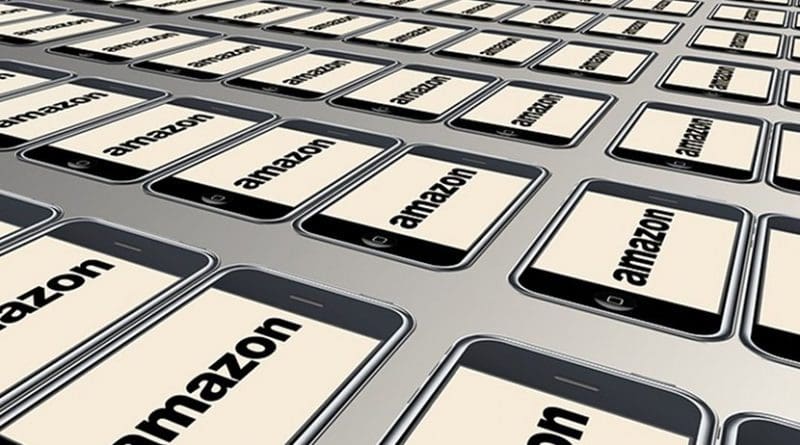The Amazon Effect: Ready For The Next Disruption?
By IESE Insight
Much of the so-called “retail apocalypse” of recent years is down to Amazon. Founded as Cadabra by Jeff Bezos in 1994 and listed on the stock exchange in 1997, Amazon has transformed from its origins as an online bookseller to include an endless range of products, both new and secondhand.
The undisputed leader of e-commerce has backed many traditional businesses into a corner, but it has also become a unique platform that has allowed companies to develop online on a scale they would otherwise be unable to contemplate, as IESE’s Joan Jané explores with the case of Amazon and mybabyallergy.com.
Listing on Amazon can cause sales to skyrocket, especially for modest-sized businesses, but it also creates a host of challenges, related to supply chains and customer service, not to mention added costs.
Limitless ambition
Amazon’s growth has been spectacular, in part due to its strong culture of innovation and reinvesting its profits. The creation of Amazon Web Services in 2006 was an early entry into cloud computing, while in 2007 it launched the innovative Kindle, which marked its first foray into producing hardware.
The idea to use drones for home delivery, which the company proposed in 2013, is emblematic of Amazon’s willingness to disrupt. And although IESE’s Evgeny Kaganer warned at the time that the project was unfeasible in the short term, he also predicted that the use of robotics in industry would eventually spill over into everyday life.
Another clear example of Amazon’s innovation vocation is its new shop concept of Amazon Go, whose first store opened in early 2018. In a session on checkout-free supermarkets, IESE lecturer Miquel Lladó highlighted Amazon’s capacity to put the client in the center of its operations and eliminate inconveniences (lines, in this case).
The question isn’t whether Amazon will enter your sector, but when. For example, it already has a finger in the healthcare pie, having bought startups and licenses to distribute medical and pharmaceutical supplies as well as signing directors in the field.
“Healthcare has all the hallmarks of a market ripe for disruption,” Anders W. Fogstrup, of Mundipharma, pointed out in IESE Insight magazine. “Neither healthcare payers nor providers have managed to find the right formula to break the traditional price-per-pill model. For a company like Amazon, which excels in customer satisfaction and unconventional thinking, this entrenched thinking must be appealing…What we have learned from Amazon over the years is never to count it out.”
Amazon — in direct competition with Google, Apple and Microsoft — looks like it may radically transform healthcare, suggests IESE’s José Luis Nueno in a report forecasting the development of health industry supply chains. (Note: the report is only available in Spanish.)
Nueno believes that, in the short term, Amazon will access the sector via distribution, where it is highly competitive, requires little innovation and carries less regulatory risk. It could start out as a drug retailer, later moving into the distribution of medical supplies, relying on Amazon Web Services and its ability to manage hospital data, to avoid stock shortages or surpluses. This could lead to a move into wholesaling, “as a global buying agent.”
Amazon considers this growth into different sectors as a way of continuing to bring more value to its customers, according to “Amazon: balancing customer centricity with employee engagement,” a case study by IESE’s Jaume Ribera, Alejandro Lago and Larisa Tatge.
Is Amazon too powerful?
Nonetheless, the more business areas Amazon encompasses, from product delivery to audiovisual services, the more potentially worrying its growing power becomes. The disruption is not just in terms of how the e-commerce giant has changed the way consumers shop and the way that sellers sell. There are also signs that, as one of the largest employers in some areas, Amazon is having disruptive effects on local labor markets and wages, according to research by José Azar, Ioana Marinescu and Marshall Steinbaum.
Lately the company finds itself caught up in the wider “techlash” happening against Facebook and Google, as explored in IESE Insight’s report “Tech at a turning point.” The citizen revolt against Amazon’s plans to build a headquarters in Queens, New York, took many by surprise. The more that Amazon continues its unstoppable march into other business areas — from food delivery to healthcare to streaming services — the more concerns are being raised over its (some might say too) successful business model. U.S. presidential candidate Elizabeth Warren has even vowed to break up the company, if elected.
It is yet to be seen how Amazon will face down these new challenges, even as it continues to take on — and presumably transform — new sectors. Executives can learn a lot from its game-changing business model and customer centricity. Yet there are also serious side effects that managers should take time to ponder, too.

